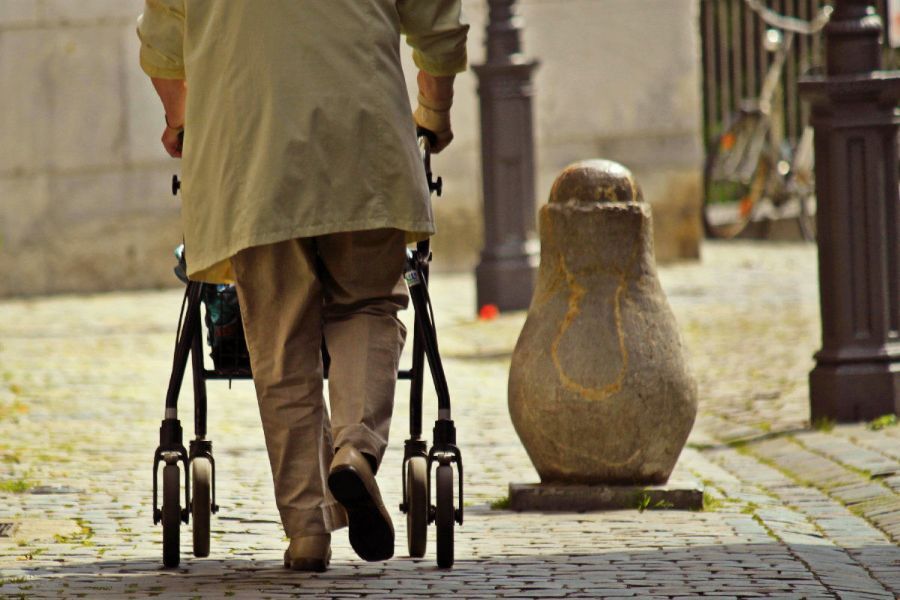How to make a correct choice for buying a walker?
When looking for a walker to help with your mobility needs, it’s essential to choose one that fits your specific needs. This means considering the frame size, seat height, material, and price.
You can also find affordable walkers at thrift stores or through charitable organizations. Depending on your circumstances, you may be qualified for funding assistance or a Medicaid waiver program to help with the cost.
Adaptations
A walker is an essential piece of equipment for aging individuals who struggle with balance and mobility issues. But a senior walker doesn’t have to be a difficult or uncomfortable device. Many updated features and accessories make these walkers more functional, comfortable, and enjoyable to use.
Adaptations can help people with hand deformities, difficulty using the brakes or handles, or need extra support to stand upright and control the walker. There are also unique frames to support the elbows and arms of a walker user, which can reduce strain on the shoulders, hands, and knees.
When purchasing a walker, selecting one that fits the individual and is the right height for them is crucial. If you need help, ask your physical therapist about the best type of walker for you or your loved one.
Several types of walker adaptations are available, including a self-locking mechanism that prevents the walker from rolling. These devices lock the walker’s front legs when a certain pressure is applied to them, eliminating any movement that could be hazardous or even dangerous.
These devices are also easy to assemble and maintain and can easily adjust for different floor surfaces. They may benefit individuals with limited mobility or a history of falls since they can be set up and taken down without raising the walker.
In addition to these innovations, many older walkers have accessories and features that can enhance safety and comfort. These include rubber tips to help grip onto a slippery surface, adhesive feet to stow away on a slick surface, caster wheels and glides for smoother walking, attached tennis balls that can be used on hardwood or epoxy floors, and sliding frames to allow users to walk on a variety of surfaces.
When choosing a walker, it’s also a good idea to consider your personal preferences and the surrounding environment. For example, if you have poor vision, choose a well-lit walker with high-contrasting tape near the handles or brakes to make it easier to locate in low-light conditions.
Seating
For many people, sitting down and resting is vital to their independence. This is particularly essential for elders, who may only be able to stand up for a short period. It’s often possible to find a walker or rollator with a seat that offers comfort and stability.
A padded seat can be incredibly comfortable for older adults, and it’s an important consideration when choosing a walker. Unpadded seats can be more affordable, but they won’t provide as much support.
Padded seats are also more durable, and they’re easier to clean. While they may cost more than a basic walker, they’re worth the extra investment for those needing them most.
Hand brakes are another feature to look for in a walker. Some have loop brakes, which require a bit of muscle energy to press down; others have push-down brakes that activate automatically.
The Drive Medical Nitro Euro Style Rollator Walker has a sturdy frame, large wheels, and an easy-to-use loop braking system for safe indoor and outdoor use. This walker also has adjustable handles and folds up for easy storage or transport.
This walker has a 300-pound weight capacity and an overall width that fits through most doorways. Its four wheels are easy to turn, and it has a handy brake cable for added safety.
It’s also an excellent choice for taller users, as the frame is designed to allow room for a more natural walking gait. You’ll also feel secure with the non-skid tires on the rear wheels.
While it’s a little pricey, this walker is one of the most versatile on our list.
It’s a high-quality product that will last for years to come. The walker is built with anodized aluminum, so it’s lightweight and sturdy. It’s available in red or blue and can be folded for easy storage. It’s an excellent option for seniors who want to travel easily or take advantage of the outdoors.
Stability
A four-wheel walker gives you an extra stable base to walk. They are usually a little heavier than a three-wheel rollator, but they’re still relatively light and fold down to fit in the trunk of your car. Most models also come with seat and storage compartments, making them an ideal choice for longer outings.
Choosing the right walker is an essential part of maintaining your independence. Whether you’re looking for something to take shopping, to use on a trip or at home, finding the best option is essential for your safety and comfort.
When shopping for a walker, consider the height of its handles, which should line up with the bend in your wrists when you stand straight. This height is essential for transferring weight to your arms without hunching over.
It’s also a practical idea to look for a walker that adjusts to your height to customize it to your needs. This is particularly helpful if you have a shorter frame.
You can find a good walker for your needs by learning more about the different types of walkers and their features. Some of these features can significantly affect your mobility and quality of life.
Wheels and Glides:Many walkers have wheels and glides that help you move faster, but some don’t. The ones with glides tend to be a bit more expensive than those without them, but they can be worth it if you have the limited arm strength.
Brakes:Most rollators have brakes, which keep you in control of your speed when walking down a downward slope. However, if you have small or weak hands, the tight brakes on some models can be challenging to apply.
A rollator’s brakes are often sleeved on the outside, but some have internal cables. If your home has narrow doorways or tight spaces, it may be worth checking out a model with internal brake cables.
Stability is an essential factor in a walker, especially for seniors who need to be able to walk long distances or take short breaks during walks. A standard walker with no wheels provides a more stable base and is best for indoor or short-distance use, but two-wheeled walkers offer better balance than a rollator.
Safety
A 4-wheel walker with brakes can be a safe option for seniors who have limited balance and are more likely to fall. The walker can help seniors with daily mobility tasks and provide support as they transition from sitting to standing, allowing them to remain active and independent.
Most four-wheel walkers come equipped with brakes, which operate by pressing down on a pedal or lever. These brakes can help reduce the fall risk and can be helpful when walking down slopes, especially in confined spaces.
When shopping for a walker, it is essential to understand the instructions to make sure you understand how to operate it correctly. It is also essential to make sure that you have a clear walking path and that all obstacles are cleared away from the walker before using it.
To ambulate, keep your arms in between the two arm handles of the walker and lean forward slightly to stand up straight. If you are having trouble getting up, it is recommended that you use chair armrests or handrails to assist with this step.
If you cannot stand, ask for assistance from a friend or family member. You can also ask for help from a healthcare professional if necessary.
Many walkers are height-adjustable, so they can accommodate a range of users and ensure that you can safely get around with the right walker for your needs. They also often have locking mechanisms, so you can lock the walker when not in use.
You can also use the brakes on the front wheels of the walker to control your speed and distance out in front of you. This can be especially helpful when turning the walker to go backward.
While many walkers have safety features, it is essential to remember that all walker models can be dangerous if misused. If you are unsure how to use your walker, it is a good idea to seek assistance from a medical professional before using it.
.png)


 Canadian Dollar
Canadian Dollar  US Dollar
US Dollar 






























.png)
